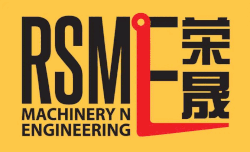Forklift tyres are essential to ensuring the safety, efficiency, and productivity of material handling operations. Choosing the right type of tyre and maintaining it properly can reduce costs, extend tyre life, and optimise forklift performance. This comprehensive guide will walk you through everything you need to know about forklift tyres, including their types, materials, sizing, maintenance, and cost-saving tips.
Types of Forklift Tyres
Understanding the different types of forklift tyres is crucial for selecting the right one for your specific application. Here are the primary categories:

1. Cushion (Press-On) Tyres
Cushion tyres are made of solid rubber fitted onto a steel band. They are perfect for indoor use on smooth surfaces, offering excellent manoeuvrability in tight spaces. However, cushion tyres are not suitable for rough or uneven terrain.

2. Pneumatic Tyres
Pneumatic tyres are similar to car tyres and are filled with air. They provide superior traction and shock absorption, making them suitable for outdoor and uneven surfaces. However, they are prone to punctures and require consistent maintenance to keep them properly inflated.

3. Solid Pneumatic Tyres
These tyres are made entirely of solid rubber, eliminating the risk of punctures. They are ideal for harsh environments with sharp debris, such as construction sites or recycling facilities. Solid pneumatic tyres are durable but offer less cushioning than air-filled pneumatic tyres.

4. Polyurethane Tyres
Polyurethane tyres are lightweight, durable, and capable of handling higher loads than rubber tyres. They are commonly used in indoor operations, particularly in warehouses. Their low rolling resistance improves energy efficiency, but they are not suitable for outdoor use.

5. Non-Marking Tyres
Designed to prevent black marks on floors, non-marking tyres are ideal for industries requiring a high level of cleanliness, such as pharmaceuticals and food processing. They are available in cushion, pneumatic, and solid varieties but may wear out faster than standard tyres.
Materials Used in Forklift Tyres
Forklift tyres are made from various materials, each with unique benefits:
Rubber: Common in cushion and pneumatic tyres, rubber provides excellent grip and shock absorption.
Polyurethane: Durable and resistant to wear, polyurethane is suited for indoor applications.
Specialised Compounds: Non-marking tyres often use hydrated silica or similar materials to prevent floor marking.
Reading Forklift Tyre Sizes
Understanding tyre size notations is crucial for selecting replacements:

Cushion Tyres: Sizes are indicated by three measurements: (A)outer diameter, (B)width, and (C)rim diameter (e.g., 18x7x12.1).

Pneumatic Tyres: Sizes are denoted by (A)width and (B)rim diameter (e.g., 7.00-12), where the first number represents width in inches, and the second is the rim diameter.
Choosing the Right Tyres for Your Forklift
When selecting tyres, consider these factors:
Environment: Indoor operations benefit from cushion or polyurethane tyres, while outdoor applications require pneumatic or solid pneumatic options.
Load Requirements: Ensure the tyre’s load capacity matches your operational needs.
Floor Surface: Smooth floors suit cushion tyres, while uneven terrain demands pneumatic varieties.
Priorities: Focus on durability, traction, and energy efficiency based on your specific requirements.
Maintaining Forklift Tyres
Proper maintenance can extend the lifespan of forklift tyres and improve safety:
Daily Inspections
Check for wear, cracks, or embedded debris.
Ensure proper inflation for pneumatic tyres to prevent uneven wear.
Cleanliness
Remove dirt and debris regularly, especially in high-contact areas.
Rotation
Rotate tyres periodically to promote even wear.
Timely Replacement
Replace tyres when they reach the wear line or show signs of damage.
Cost-Saving Tips for Forklift Tyres
Preventive Maintenance: Regular maintenance reduces the need for frequent replacements.
High-Quality Tyres: Investing in durable tyres minimises long-term costs.
Operator Training: Skilled operators reduce wear by driving responsibly.
Conclusion
Selecting and maintaining the right forklift tyres can make a significant difference in operational efficiency, safety, and cost-effectiveness. By understanding tyre types, materials, and maintenance practices, you can optimise your forklift’s performance and reduce downtime.
Prioritise tyre care today for safer, smoother operations tomorrow.

Comments